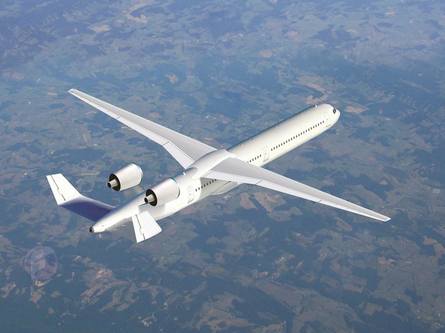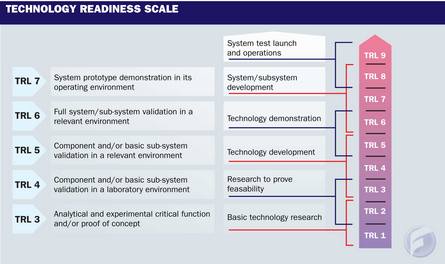Ric Parker, Rolls-Royce's director of research and technology, needed no prodigious ability in mental arithmatic to work out that the average €200 million ($310 million) of project funding available under Clean Sky would dwarf the turnovers of many companies involved.
The Clean Sky Joint Technology Initiative (JTI) has become a reality. With the official launch of the €1.6 billion initiative on February 5, Clean Sky represents one of Europe's largest and most inclusive research programmes ever attempted.
Ambitious Commitment
Parker, as master of ceremonies at theBrussels launch, called it "one of the mostexciting programmes in Europe". It does indeed represent an ambitious commitment on the part of both the European Union and its aerospace industry to develop those future technologies that SAAB chief executive Ake Svensson reckons will determine "how we fly and what we fly" in their concerted effort to meet some highly challenging environmental performance goals by 2020.
However, Clean Sky's mission is to bring technologies to a high readiness level and so cannot strictly be regarded as a programme for product development. Clean Sky will simply invent those technologies that will make possible radical shifts in new generation fixed and rotary wing aircraft.
While collaborative programmes have already made large strides towards these targets, Clean Sky will co-ordinate a broader effort -involving virtually all of Europe's major aerospace players and their supply chains to accelerate the validation and development of new technologies, reduce the risk and shorten the timescales in bringing them to market.
It was always envisaged that Clean Sky would establish a watershed in public private partnerships at EU level, and that a significant part of the programme would be performed by partners and subcontractors selected through competitive calls for proposal and tender.
The initial membership of Clean Sky comprises 86 organisations in 16 countries, 54 industries including 20 small and medium sized enterprises (SME), 15 research centres and 17 universities.
The European Commission is supporting this endeavour by providing up to 75% of the project funding - the upper limit of community financial contributions allowed under the wider seventh research framework programme. Eligible will be SMEs, public bodies, secondary and higher education establishments and non-profit research organisations - which will not have to contribute to the running costs of the initiative, either.
Open Calls
Alenia Aeronautics' Carmelo Latella is Clean Sky governance group chairman. He says calls will start once rules and procedures are in place, hopefully by summer. Eventually 3,000 contracts will be issued in an effort to bring SMEs on board with open calls for specific tasks - a novelty in Clean Sky - made on a wholly-competitive basis. These will have been prepared by integrated technology demonstrator (ITD) Leaders and Associates with partners selected on independent expert advice in an open and transparent procedure.
Intellectual property shall be written into the grant agreements for partners with possibly a two-stage competition process. "This may be particularly useful if a meaningful specification requires the inclusion of confidential information, as well as in cases where a very large number of responses is expected," Latella says.
Clean Sky comprises six ITDs. Each will perform preliminary studies and select technologies to be developed and integrated, then lead large scale demonstrations to bring these innovative technologies to an appropriate maturity. The ITDs are:
SMART Fixed Wing Aircraft (see below): active wing technologies and new aircraft configuration
 |
|---|
© Tim Bicheno-Brown/Flight International |
Green Regional Aircraft: low-weight aircraft using smart structures, low external noise configurations and technology developed in other ITDs, such as engines, energy management and new system architectures.
Green Rotorcraft: innovative rotor blades and engine installation for noise reduction, lower airframe drag, integration of diesel engine technology and advanced electrical systems to eliminate noxious hydraulic fluids and reduce fuel consumption.
Sustainable and Green Engines : five engine demonstrators to integrate low noise technologies and lightweight low pressure systems, high efficiency, low NOx and low weight cores and novel configurations such as open rotors and intercoolers.
Systems for Green Operations : all-electrical aircraft equipment and systems architectures, thermal management, capabilities for "green" trajectories and missions and improved ground operations for the Single European Sky.
Eco-Design (see below): green design and production, including aircraft recycling which redues the environmental lifecycle impact, accelerating compliance with the REACH directive.
Clean Sky will also include a Technology Evaluator that assesses the contribution of research results in meeting the environmental objectives of the programme.
 |
|---|
Source: Flight International
















